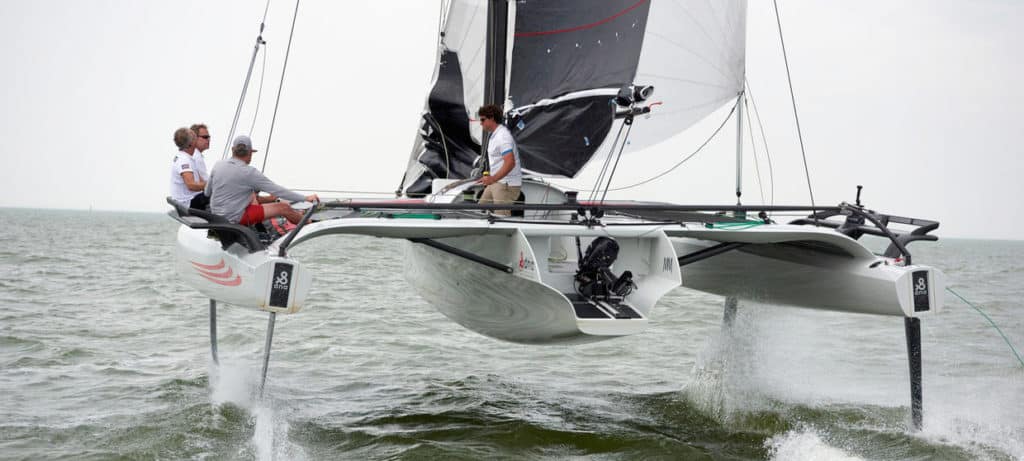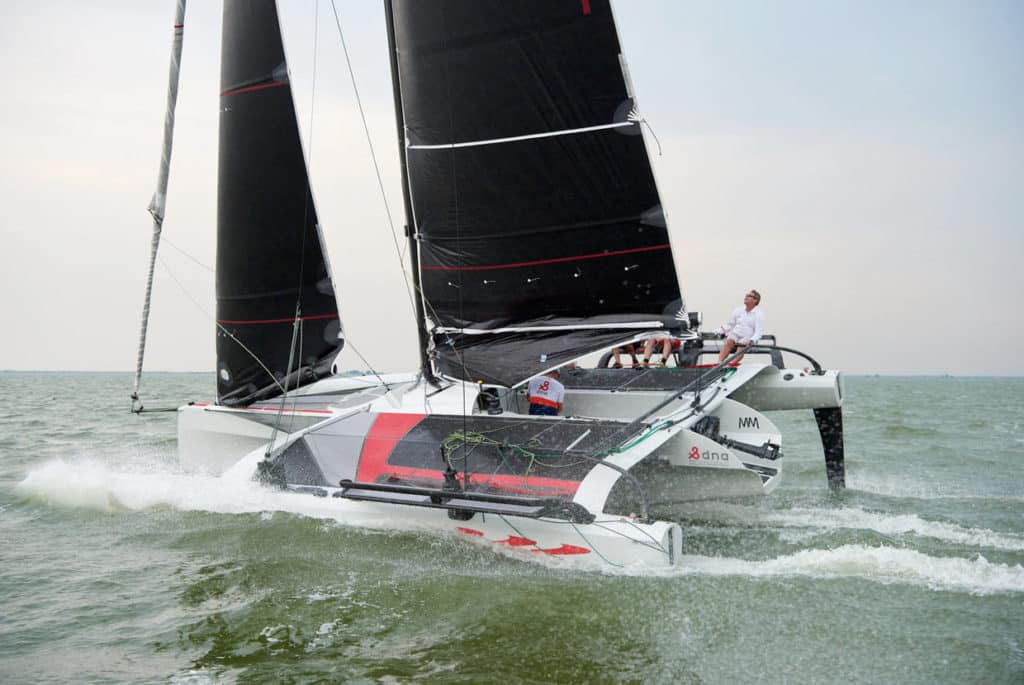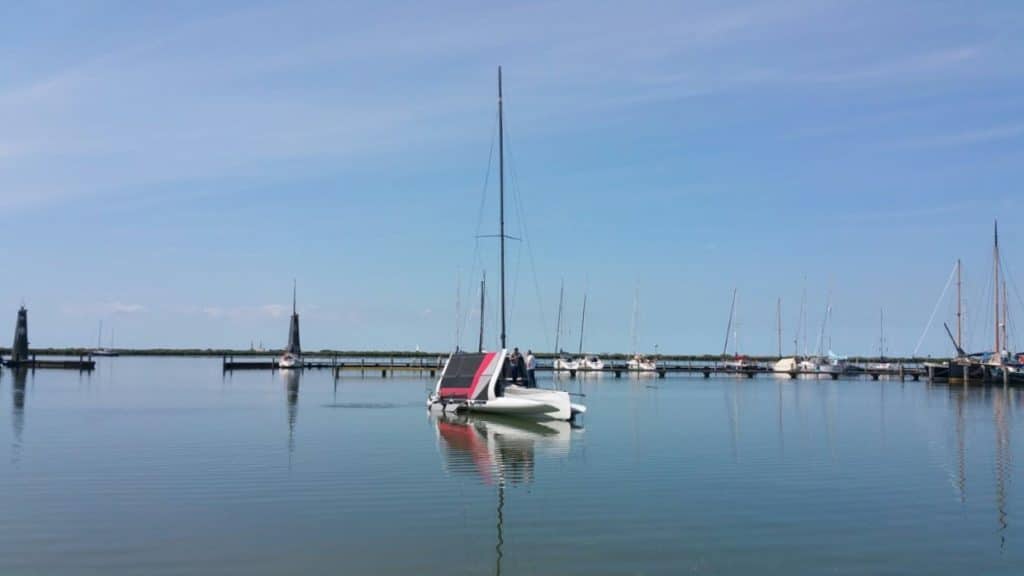
Over the past year and half, high-ranking and highly engaged members met inside New York YC’s Harbour Court Station to agree upon what the club’s next sanctioned one-design class would be. The result was the commissioning of the Westerly Marine-built IC37 monohull, of which club member Malcom Gefter has little interest in. The white-haired and freakishly fit septuagenarian thorn in the selection committee’s side will instead be off flying his 36-foot TF10 trimaran. Gefter and four others, including New York YC Commodore Phil Lotz, have embarked on their own endeavor, one that packages multihull sailing with foiling.
The TF10 is not only about going fast, says Gefter, although, for him, that is the appeal. Gefter’s 11 years of experience in one-design grand-prix racing includes stints in the Melges 32, Swan 42, and Marstrom 32 classes. His takeaway from those experiences is that often the difference between winning and losing is the pocketbook and not the skill of the owner-driver.
When North Sails president Ken Read suggested to Gefter he get in on the Marstrom 32 catamaran, however, he saw an opportunity to race at a more level owner/driver playing field. “The Marstrom was a place where the heavy spenders couldn’t dominate because there was a balance of experience, and it’s an environment where they were not comfortable.”

His entre into the multihull world did more than put him on even standing, however. It allowed him to push beyond his own physical and mental limitations, to a place he says most of his yacht club peers today are unwilling to go — “there” being outside their respective comfort zone, as well as the gym.
In lobbying his New York YC colleagues to embrace a multihull concept, however, he had to strike down the stigmas of catamaran sailing: the inherent dangers of pitchpoling and capsizing, and the greater technical challenges of big-boat foiling: primarily the power required to raise and lower the foils under load. Safety, therefore, became the underlying principle when Gefter and a group of stakeholders commissioned their foiling trimaran to the design offices of Morelli & Melvin and the builder, DNA Performance Sailing in the Netherlands.
“If you look at all the ocean-going multihulls setting records, they’re all trimarans,” says Gefter. “This boat bridges the gap between monohull and multihull sailors and embraces both worlds.”
For the foiling aspect of the TF10, they looked to the A-Class catamaran, and the concept of “four-point” sailing whereas both foils and rudders deliver the necessary lift and down-force components for simpler and more stable flight. Four-point foiling also eliminates the need to mechanically drive the boards up and down during maneuvers. Flight control, instead, simply comes from electronically adjusting the foils’ angle of attack. You can set the ride height how you like, says Gefter, depending on your skills, conditions, and personal comfort level.

As a strict one-design class, says Gefter, the TF10, provides a new generation owner/drivers a fresh start because they’re at the same experiential starting point. It is, however, not a dumbed-down foiler on a four-point walker. The 2,400-pound platform is built with pre-preg carbon, the tapered “Z-foils” are carbon, and controls are electric (no grinding), powered by a 48-volt Lithium-Ion battery bank that Gefter says provides faster and more precise foil control than possibly manually and enough juice for 20 hours of sailing.
The first boat of the line was launched earlier this summer and immediately foiling in sea trials before a round of tweaking (anticipated changes to foil and rudder areas) and tested in the lower half of the 6-to 25-knot wind range. “It was faster than the Marstrom in non-foiling conditions,” says Gefter, adding that in flat water, the boat could easily be pushed into the 30-knot wind envelope. With an experienced crew, of course.
For practicality, the boat hinge-folds (like a Corsair trimaran), the rig is deck-stepped, the rudders are kick-up for ramp launching, and the foils can be slotted into the daggerboard cases from above (rather than having to insert them from below while the boat is suspended in a hoist). At less than 3,000 pounds all up, it’s a perfectly towable and compact package.
One of its more attractive selling points, Gefter adds, is the factory-controlled inventory of one-design components as well as the experimental class rules governing professional sailors. The rules, says Gefter, are written to prevent professionals from manipulating them. The class will begin with a pro-am in place whereby the professionals must have multihull experience. They’ll be hired by the class and rotated amongst the boats at sanctioned regattas. There, is however, a “circuit breaker” in the rules that will allow them to revisit the concept should it not work as intended.
The asking price? A half-million dollars. And while it’s a non-commercial venture, says Gefter, they’ve invested in tooling with the potential of at least 100 boats. He’s not in it to sell boats, whatsoever, he admits, but rather to prove a concept, to solve a problem, and have a game-changing platform that ordinary sailors—like him—can embrace.









